Upgrade or replace your roof? Consider your climate and region when choosing roofing materials. Factors like weather patterns, energy efficiency, durability, local regulations, and costs play a role. Explore suitable materials for hot/dry, cold/snowy, and rainy/humid environments. Read on to make an informed decision for a long-lasting and effective roof.
In this blog, we will discuss the different roofing materials available and how to choose the right one for your climate and region. Read on to learn more!
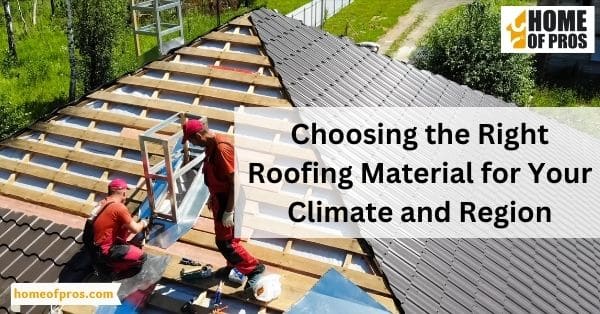
Factors to Consider when Choosing the Right Material for Your Climate and Region
Choosing the right roofing material for your climate and region requires careful consideration of various factors.
- Climate and Weather Patterns: Consider the average temperature, humidity, rainfall, wind speeds, and extreme weather events in your region. Choose a roofing material that can withstand the specific climate conditions.
- Energy Efficiency: Opt for materials with reflective properties to reduce heat absorption in hot climates, or choose materials with good insulation properties for colder regions to improve energy efficiency in your home.
- Durability and Longevity: Select a roofing material that is resistant to UV radiation, moisture, wind, and temperature fluctuations to ensure a long lifespan and minimal maintenance requirements.
- Local Building Codes and Restrictions: Familiarize yourself with the building codes and regulations in your area. Ensure your chosen material meets the specific requirements for fire resistance, wind uplift, and sustainability.
- Aesthetics and Architectural Style: Consider the visual appeal and architectural style of your home. Choose a roofing material that enhances the overall appearance and complements the design of your property.
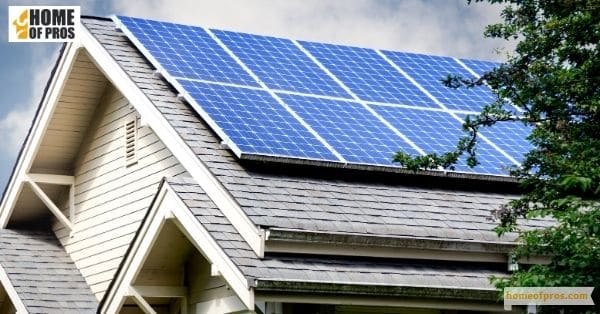
Common Roofing Materials
Asphalt Shingles
These shingles are known for their durability, affordability, and ease of installation. Additionally, asphalt shingles are available in a wide range of colors and styles, making it easy to find a look that complements the overall aesthetic of your home.
One of the reasons why asphalt shingles are so durable is that they are composed of multiple layers of materials that work together to protect your roof from the elements.
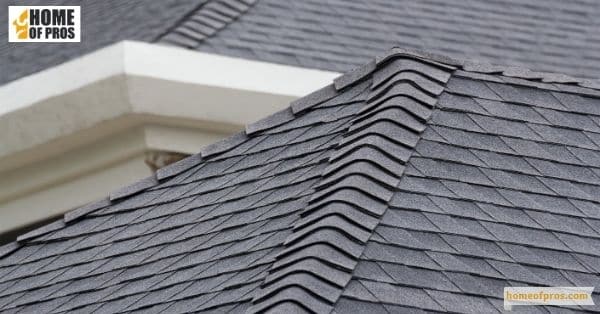
Wood Shakes and Shingles
These natural, renewable materials not only offer a classic, rustic look but also provide excellent insulation. Wood shakes are typically thicker and hand-split, lending a more textured appearance to the roof, while shingles are machine-cut for a more uniform look.
The durability and lifespan of these materials depend largely on the type of wood used and how well they are maintained, but a well-maintained wood shake or shingle roof can last anywhere from 30 to 50 years.
It is important to note that in some areas, these roofing materials may be subject to fire codes and should not be used.
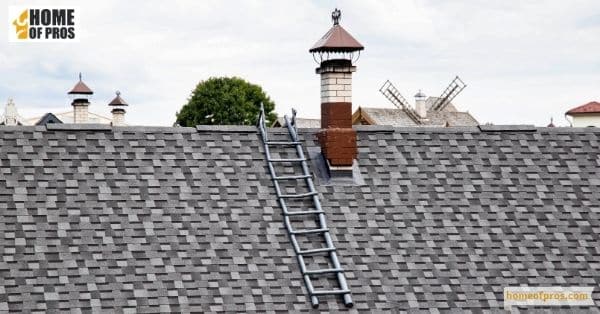
Metal Roofs
Metal roofs have gained popularity due to their durability, low maintenance, and energy efficiency. Unlike other roofing materials like asphalt shingles, metal roofs do not warp, crack, or rot. They are also resistant to fire, insects, and harsh weather conditions.
Metal roofs are available in a wide range of colors and styles, making them a versatile option for any type of house. Their reflective surface also helps to reduce the amount of heat absorbed by the roof, which results in lower energy bills and a more comfortable indoor living environment.
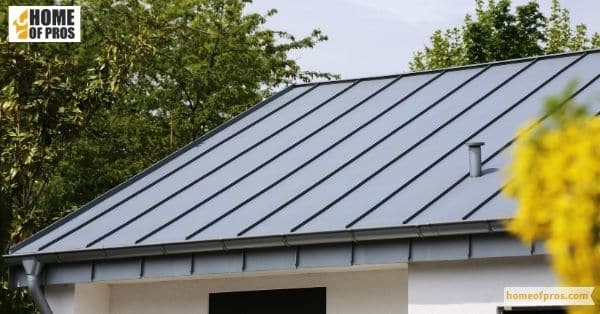
Clay and Concrete Tiles
Clay and concrete tiles are two of the most popular roofing materials available today. Made from natural materials, these tiles are known for their durability and strength, making them ideal for homes located in areas prone to harsh weather conditions.
Clay tiles are available in a wide range of colors and styles, from classic Spanish designs to sleek, modern options.
Concrete tiles are available in even more styles and are known for their versatility and affordability.
Regardless of which type of tile you choose, both clay and concrete tiles are resistant to fire and insects and have been known to last for decades with proper maintenance.

Solar Roofs
When considering a new roof, homeowners often weigh the pros and cons of various materials, such as asphalt shingles, metal, or slate. However, another option has emerged in recent years: solar roofing.
Rather than simply serving as a barrier between the interior of a home and the elements, solar roofing incorporates photovoltaic panels into the design, generating electricity to power the home.
This not only reduces energy bills but also decreases reliance on nonrenewable resources. While the upfront cost of a solar roof may be higher than traditional roofing materials. The long-term savings and environmental benefits make it a worthy consideration for those investing in the future of their home and the planet.
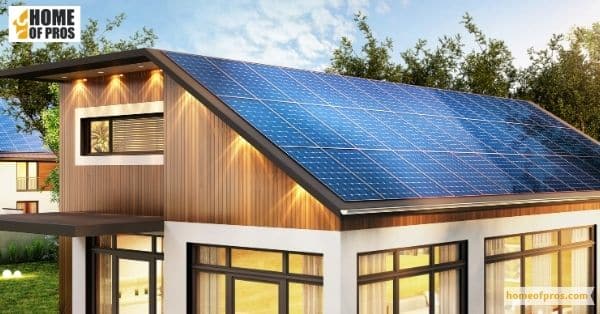
Suitable Roofing Materials for Hot and Dry Climates
In hot and dry climates, it is crucial to select roofing materials that can withstand high temperatures, resist sun damage, and effectively manage heat transfer.
Clay Tile
Clay tiles have excellent thermal resistance and can withstand high temperatures. They are known for their durability and ability to keep the interior cool by reflecting sunlight. Clay tiles also have a long lifespan and provide an aesthetically pleasing look to homes.
Concrete Tile
Similar to clay tiles, concrete tiles offer durability and thermal resistance. They have a lower cost compared to clay tiles and come in a variety of colors and styles. Concrete tiles provide good insulation and reflectivity, keeping the home cooler.
Metal Roofing
Metal roofs are highly reflective and energy-efficient, making them suitable for hot climates. They effectively reflect sunlight and reduce heat absorption. Metal roofs also have a long lifespan, are lightweight, and offer excellent durability against harsh weather conditions.

Best Roofing Options for Cold and Snowy Regions
In cold and snowy regions, it is essential to choose roofing materials that can withstand heavy snow loads, provide effective insulation, and resist damage caused by freezing temperatures.
Asphalt Shingles
Asphalt shingles are a popular choice in cold regions due to their affordability, durability, and ability to handle snow loads. Look for shingles with a high snow load rating and reinforced designs to ensure they can withstand the weight of heavy snowfall.
Metal Roofing
Metal roofs are highly durable and can effectively shed snow, preventing the buildup of heavy loads. They are resistant to ice dams and have excellent longevity. Metal roofs also provide good insulation, helping to keep the interior warm and reducing heating costs.
Slate Roofing
Slate is a natural stone material that offers exceptional durability and can last for decades. It is resistant to freeze-thaw cycles, making it suitable for cold climates. Slate roofs have a beautiful appearance and provide excellent protection against snow and ice.

Choosing Roofing Materials for Rainy and Humid Environments
When choosing roofing materials for rainy and humid environments, it is important to consider materials that can effectively manage moisture, prevent water damage, and resist the growth of mold and mildew.
Asphalt Shingles
Asphalt shingles are a popular and cost-effective choice for rainy regions. They are designed with a waterproof coating that helps repel water and prevent leaks. Look for shingles with high water resistance ratings to ensure optimal performance in heavy rainfall.
Metal Roofing
Metal roofs are highly durable and have excellent water-shedding properties. They can effectively channel rainwater away from the roof and prevent water infiltration. Metal roofs are also resistant to mold and mildew growth, making them suitable for humid environments.
Clay or Concrete Tiles
Clay and concrete tiles are known for their durability and water resistance. These materials have overlapping designs that create a barrier against water penetration. However, proper installation and maintenance are crucial to ensure the tiles remain watertight and free from cracks or damage.

In conclusion
Choosing the right roofing material for your climate and region is crucial in ensuring the longevity and effectiveness of your roof. Without proper consideration of your weather patterns and geographical location, you risk making a costly mistake in your roofing decision.
Whether you live in a region that experiences heavy snowfall, high winds, or extreme heat, there are roofing materials available to meet your needs. Be sure to do your research, consult with professionals, and take into account factors such as sustainability, durability, and maintenance requirements.
With the right roofing material, you can protect your home, save on energy costs, and maintain peace of mind for years to come.












